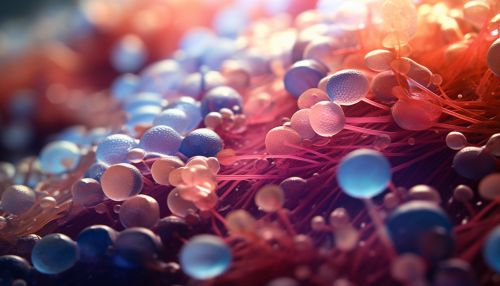Microbiology
Introduction
Microbiology is the scientific study of microorganisms, including bacteria, viruses, fungi, and protozoa. This discipline includes fundamental research on the biochemistry, physiology, cell biology, ecology, evolution and clinical aspects of microorganisms, including the host response to these agents. Microbiology is intricately linked to fields such as immunology and molecular biology.


History of Microbiology
The field of microbiology began in the 17th century with the invention of the microscope. Antonie van Leeuwenhoek, a Dutch tradesman and scientist, is often called the "father of microbiology" for his work in developing methods to observe microorganisms and describing their morphology. His discoveries paved the way for future scientists to study these tiny organisms, leading to significant advancements in medicine, agriculture, and other fields.


Branches of Microbiology
Microbiology is a broad field that encompasses many sub-disciplines. Some of the major branches include:
- Bacteriology: The study of bacteria, their biology, and their impact on humans and the environment. Bacteriology has been instrumental in the discovery and development of antibiotics.
- Virology: The study of viruses – submicroscopic, parasitic particles of genetic material contained in a protein coat – and virus-like agents. It focuses on the structure, classification and evolution of viruses and their use in research and therapy.
- Mycology: The study of fungi, including their genetic and biochemical properties, their taxonomy, and their use in medicine (as antibiotics) and agriculture (as biocontrol agents).
- Parasitology: The study of parasites, their hosts, and the relationship between them. This branch is often viewed as a subset of microbiology or pathology.
- Immunology: The study of immune systems in all organisms. It involves studying the complex biological structures and processes that protect organisms from disease or damage.


Microbial Genetics
Microbial genetics is a subject area within microbiology and genetic engineering. It studies the genetics of very small (micro) organisms; bacteria, archaea, viruses and some protozoa and fungi. This involves the study of the genotype of microbial species and also the expression system in the form of phenotypes.


Microbial Physiology and Biochemistry
Microbial physiology and biochemistry studies the functioning of microorganisms. It includes the study of microbial growth, microbial metabolism, and microbial cell structure. Microbes can be used to solve real-world problems by transforming simple compounds into valuable ones for humans, a process known as biotechnology.


Microbial Ecology
Microbial ecology is the study of the relationship of microorganisms with one another and with their environment. It concerns the three major domains of life—Eukaryota, Archaea, and Bacteria—as well as viruses.


